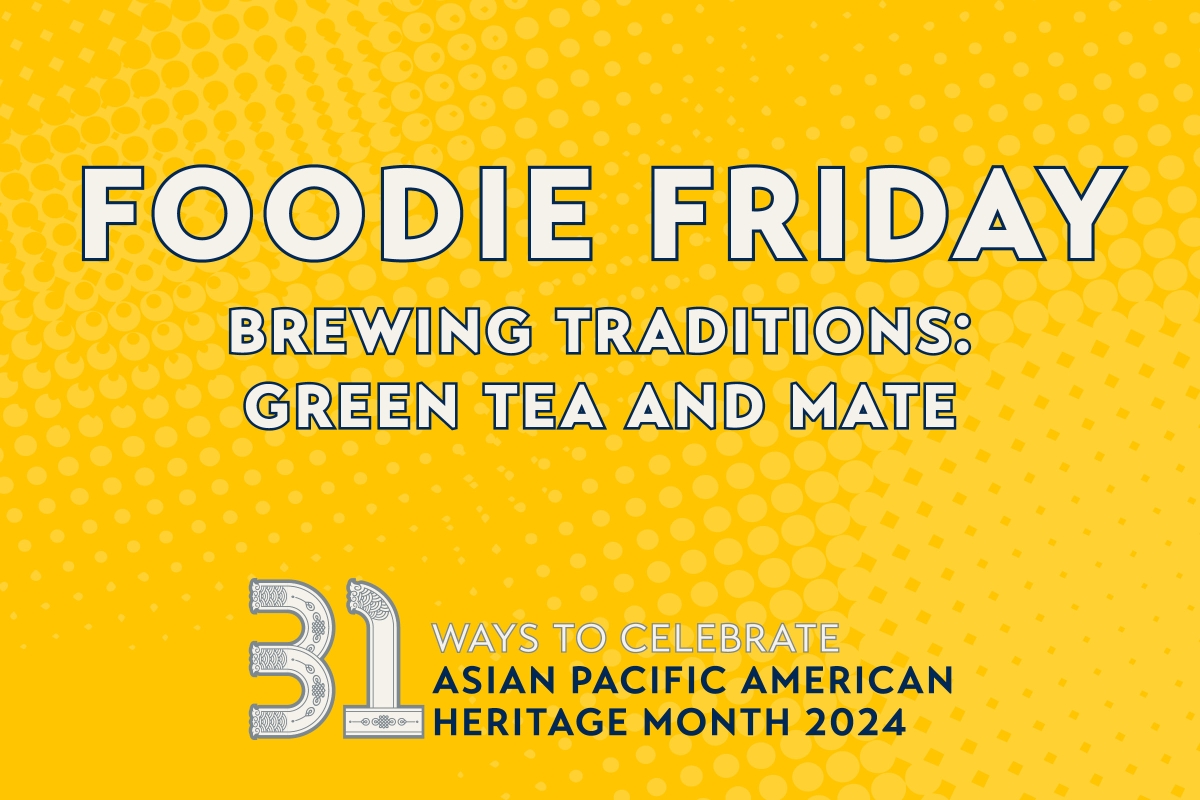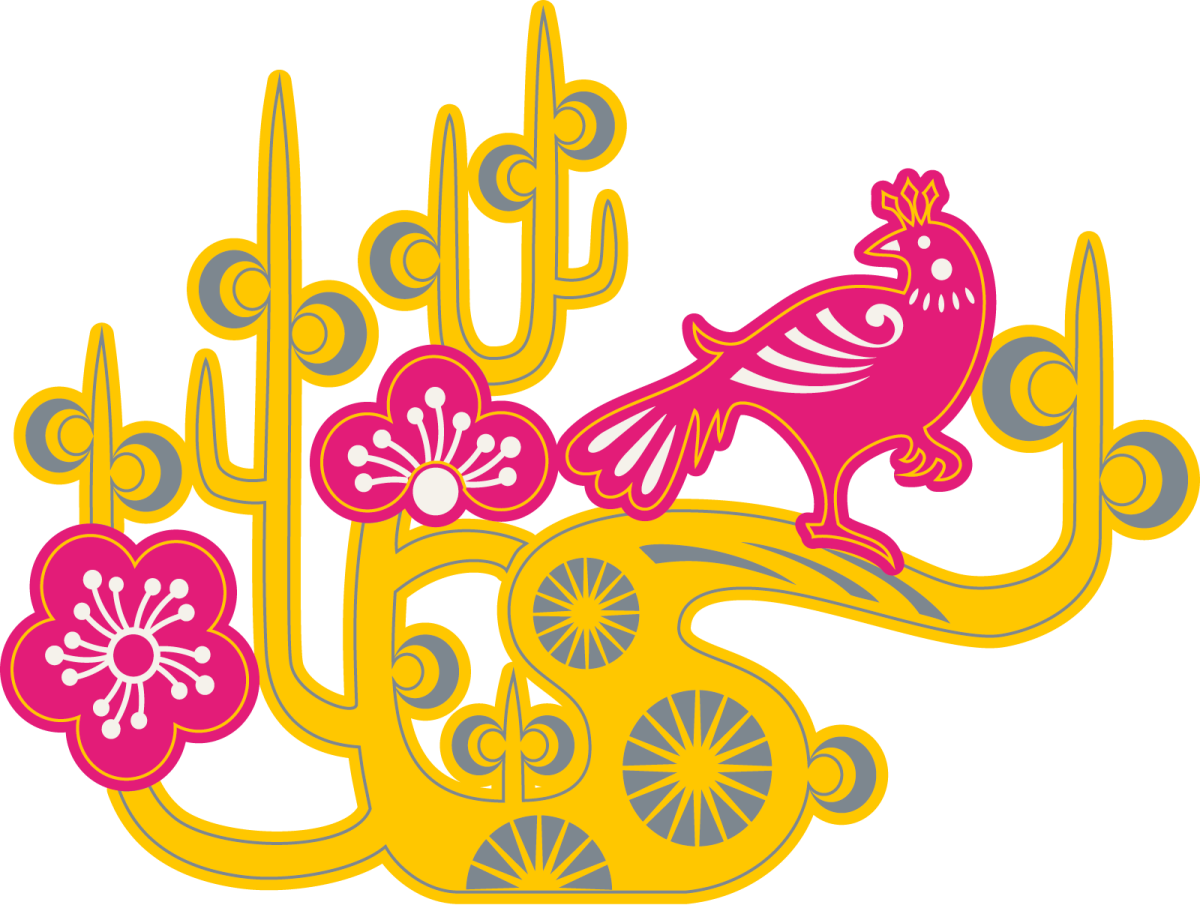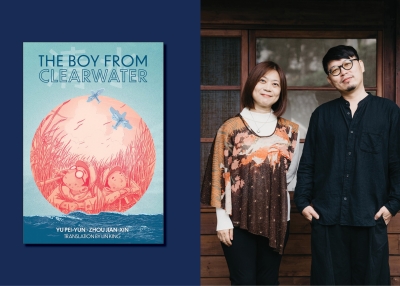Foodie Friday: Brewing Traditions: Japanese Green Tea and Argentinian Mate

Dive into Houston's bustling food scene and the many culinary traditions the Bayou City can boast! In our Foodie Fridays, Asia Society Texas' team shares favorite restaurants, traditions from diverse cultural backgrounds, and more — stay hungry!
Meet Nina Shimaguchi and Rayén Torres

Nina Shimaguchi is the Japan Outreach Educator at Asia Society Texas and is from Osaka, Japan. Her grandmother is a Tea Ceremony Teacher, so she grew up with Japanese tea traditions and has always had a strong interest in teas as a result. With a background in customer service and hospitality, Nina has enjoyed sharing her love of tea with others and followed her grandmother’s footsteps to become certified to silver level in Green Tea by the NPO Nihoncha Instructor Association.

Rayén Torres is the Business and Policy Programs Manager at Asia Society Texas. Born in Buenos Aires, Argentina, Rayén deeply enjoys mate, both as part of her everyday life and as some of her most precious memories. Before joining AST, Rayén was a researcher specializing in cultural diversity. Especially while drinking fresh mate, she enjoys reading, watching movies, cooking, and having long talks with friends.
Why we're focusing on tea brewing traditions
Part of the beauty of food and drinks lies in their ability to bring people together, whether at family gatherings or festive occasions with friends, during a quiet moment of reflection amidst our busy lives, or at a romantic rendezvous. In an earlier workshop at AST, Nina and Rayén collaborated to offer their insights on two cherished beverages from their respective homelands. Beyond warming the hearts of those who drink them, green tea and mate have played pivotal roles in shaping vibrant industries and cultural landscapes in both Asia and South America.
In this Foodie Friday feature, Nina and Rayén dive into the rich worlds of Japanese green tea and Argentinian mate to uncover the shared characteristics and distinctive qualities of these beloved beverages.
Explore the cultural significance, historical roots, and preparation techniques — complete with a video demonstration! — as they provide some helpful tips for those eager to learn more about and try these delicious traditions.
Quick facts!
Origins
Green tea was introduced to Japan from China, initially as a medicine. One legend states that as the emperor and herbalist Shennong sought the nutritive value of different plants, he consumed 72 poisons in one day but detoxified by chewing green tea leaves. As looseleaf tea became more accessible over time, a new type of green tea was developed during the Edo period (1603–1868) and the drink became more popular.
Mate is produced from the yerba mate plant, which various Indigenous people across the South American continent used for medicine, rituals, and even currency. The Guarani people shaped today's mate-drinking traditions as a social and communal sharing experience. While there are regional variations in its preparation and presentation across Paraguay, Brazil, Uruguay, and Argentina, mate is consumed worldwide today.
Health benefits
Green tea's health benefits are numerous! It naturally contains catechins, which helps prevent starch from being metabolized and restrict the absorption of glucose, thus keeping blood pressure low and helping to prevent weight gain. It also contains vitamin C, which acts as an antioxidant to improve immunity.
Mate is also rich in antioxidants, vitamins, and minerals to reduce inflammation and aid digestion. It also delivers a natural energy boost.
What do these beverages mean to us and the people in our home countries?
Nina: I don't remember how old I was when I first tried green tea — maybe when I was in kindergarten. I do remember we always had green tea — or other teas, like hōjicha (roasted green tea) or mugicha (barley tea) — around at home. Green tea is such an important item for Japanese people. When we welcome guests to our home, we offer green tea because it means we'll relax and spend time together.
Rayén: I tried mate for the first time as a kid, and I am ashamed to admit I didn't like it then. As time passed, I started to appreciate not only mate's rich and complex flavor but also its social meaning. Today, I cannot imagine my life without mate. It's an excuse to come together. In Argentina, when you want to meet a friend, you don't say, "Let's hang out"; instead, you say, "Let's drink some mate" or "I am on my way to your home; heat up the water!" It's a tradition passed down through generations.
For many people, mate is like a companion. Unlike most teas, you constantly pour more water to brew, which means you can drink from the same mate for hours. It's the best companion for an all-nighter; I couldn't have graduated without it.
What are some customs or etiquette around these beverages?
Nina: When you drink green tea, hold your cup with two hands so that one is underneath the cup to prevent it from dropping. This gesture is part of Japanese tea etiquette, and is done by Japanese people without even thinking about it.
If you are hosting a guest for tea, you should constantly care about how much tea is in the guest's cup so you can pour tea if they would like more. Also, the temperature of the green tea is important: Japanese culture is always sensitive to the seasons because of Shintoism culture where people worship nature and are attuned to seasonal changes. So if the outside temperature is warm or hot, a host should serve cold green tea — which most Texans should be prepared to enjoy!
Rayén: In Argentina, it's common to drink mate in a group setting called "rondas de mate" (mate rounds). The group sits in a circle, and a cebador serves and passes the mate around for everyone to drink from the same mate gourd. When it's your turn, the cebador will give you the mate; after you drink it, you should pass it back to the cebador without stirring or moving the yerba straw. The cebador puts effort into arranging the mate for everyone, so all you need to do is enjoy.
The mate round continues until no one else is drinking. Round members can stop drinking at any time, but they're welcome to stay and chat! It's not necessary to thank the cebador when receiving the mate; it's when you don't want to be served mate anymore that you can signal the cebador by saying, "Thank you."
Above all, don't worry too much about the details. While some Argentinians are very methodical when serving and drinking mate, many are happy to help people new to these traditions. Just relax and enjoy!
About APAH Month at Asia Society Texas
Beginning in 2021, Asia Society Texas has celebrated Asian Pacific American Heritage Month with the Houston community and beyond through a curated calendar of events for 31 ways to celebrate over the 31 days of May. Spotlighting the traditions, talents, and contributions of Asians and Asian Americans, the calendar highlights the month's key Asia Society programming, providing a platform to showcase local artists, performers, educators, and leaders who contribute to the vibrant, multicultural tapestry of Houston while also featuring staff recommendations for our favorite music, books, movies, and more by Asian and Asian American creatives.
At Asia Society Texas, APAH Month is an opportunity to celebrate and honor Asians and Asian Americans and to uplift their stories to a broader audience as part of our goal to inspire our larger community to better understand one another through culture, conversation, and connection. For information about sponsoring APAH Month and other projects like this one, please contact Saleena Jafry at [email protected] or 713.496.9939.
Presenting Sponsor of APAH Month at Asia Society Texas
Sponsors of APAH Month
Comcast
Womble Bond Dickinson (US) LLP
Media Sponsor

APAH Month 2024 Calendar
Digital Calendar Interactive/Printable PDF
Past APAH Month Calendars
2023: Highlights | Details
2022: Highlights | Details
2021: Details
About Asia Society Texas
Asia Society Texas believes in the strength and beauty of diverse perspectives and people. As an educational institution, we advance cultural exchange by celebrating the vibrant diversity of Asia, inspiring empathy, and fostering a better understanding of our interconnected world. Spanning the fields of arts, business, culture, education, and policy, our programming is rooted in the educational and cultural development of our community — trusting in the power of art, dialogue, and ideas to combat bias and build a more inclusive society.






